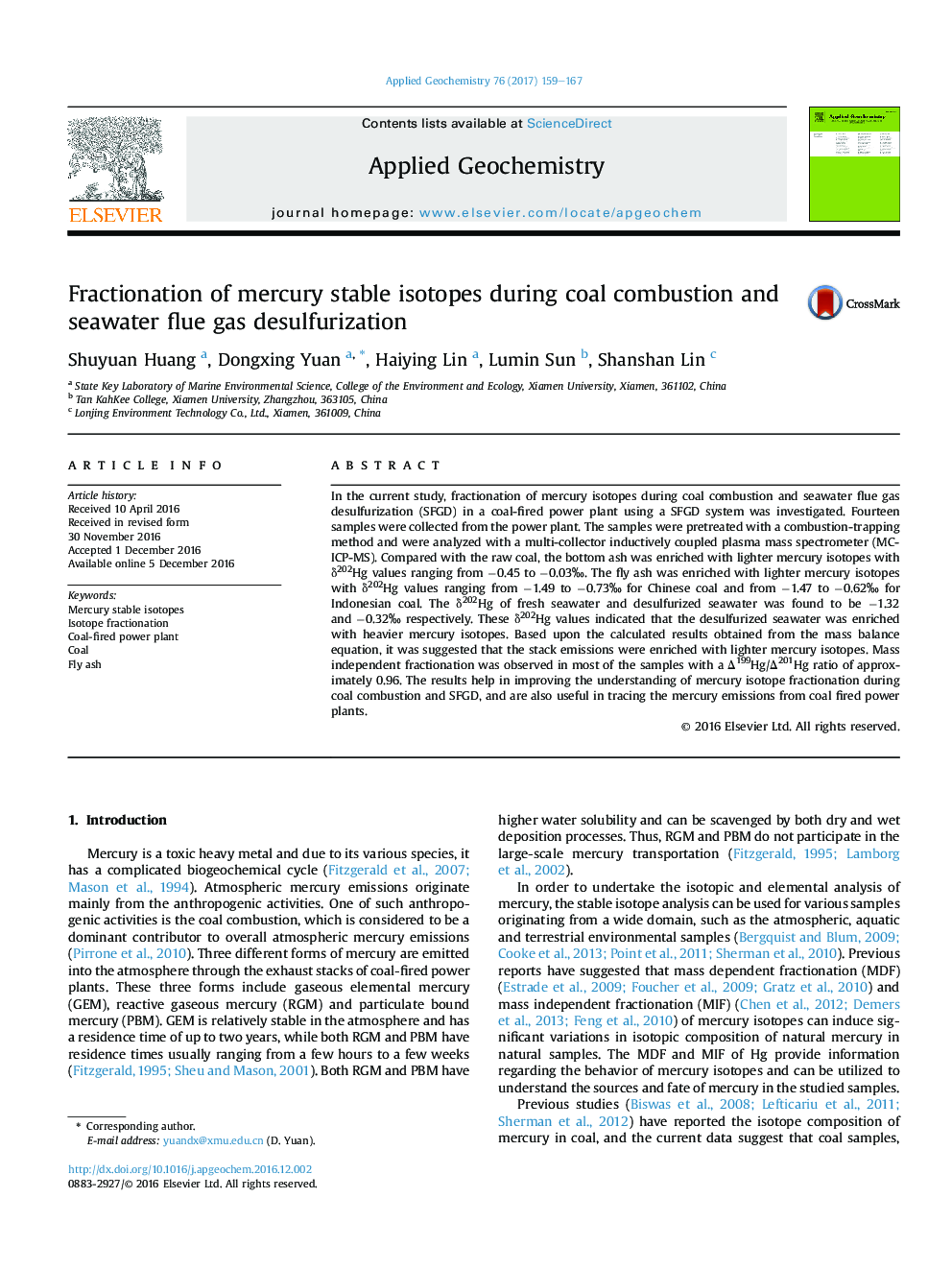| Article ID | Journal | Published Year | Pages | File Type |
|---|---|---|---|---|
| 5752626 | Applied Geochemistry | 2017 | 9 Pages |
Abstract
In the current study, fractionation of mercury isotopes during coal combustion and seawater flue gas desulfurization (SFGD) in a coal-fired power plant using a SFGD system was investigated. Fourteen samples were collected from the power plant. The samples were pretreated with a combustion-trapping method and were analyzed with a multi-collector inductively coupled plasma mass spectrometer (MC-ICP-MS). Compared with the raw coal, the bottom ash was enriched with lighter mercury isotopes with δ202Hg values ranging from â0.45 to â0.03â°. The fly ash was enriched with lighter mercury isotopes with δ202Hg values ranging from â1.49 to â0.73â° for Chinese coal and from â1.47 to â0.62â° for Indonesian coal. The δ202Hg of fresh seawater and desulfurized seawater was found to be â1.32 and â0.32â° respectively. These δ202Hg values indicated that the desulfurized seawater was enriched with heavier mercury isotopes. Based upon the calculated results obtained from the mass balance equation, it was suggested that the stack emissions were enriched with lighter mercury isotopes. Mass independent fractionation was observed in most of the samples with a Î199Hg/Î201Hg ratio of approximately 0.96. The results help in improving the understanding of mercury isotope fractionation during coal combustion and SFGD, and are also useful in tracing the mercury emissions from coal fired power plants.
Related Topics
Physical Sciences and Engineering
Earth and Planetary Sciences
Geochemistry and Petrology
Authors
Shuyuan Huang, Dongxing Yuan, Haiying Lin, Lumin Sun, Shanshan Lin,
